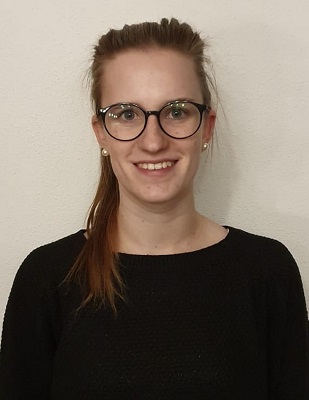Lara Trautmann
Lara Trautmann
Bachelorstudentin
3D-printing of pre-crosslinked alginate hydrogel scaffolds for bone defects
Betreuer: Vera Bednarzig, Prof. Aldo R. Boccaccini
Over the last decades 3D-printing has become increasingly important for tissue engineering. The technique offers the opportunity to create scaffolds and implants individually for every patient. A frequently used material is the natural polymer alginate [1, 2]. It can be combined with calcium-carbonate (CaCO3) and other components to form a pre-crosslinked gel [2]. This hydrogel shows good degradability, ease of processing and the ability to immobilize incorporated cells. A secondary (final) crosslinking process, by adding CaCl2 or BaCl2 is necessary, to increase the mechanical properties and to form a stable gel. The aim of this study is to create a multilayer scaffold with the pre-crosslinked hydrogel alginate printed on top of a metallic mesh and to characterize the mechanical properties of the new construct and the connection between metal substrate and hydrogel.
[1] B. Sarker et al., Fabrication of alginate–gelatin crosslinked hydrogel microcapsules and evaluation of the microstructure and physico-chemical properties, Journal of Materials Chemistry B 2 (2014) 1470-1482.
[2] L. Wang, R.M. Shelton, P.R. Cooper, M. Lawson, J.T. Triffitt, J.E. Barralet. Evaluation of sodium alginate for bone marrow cell tissue engineering. Biomaterials 24 (2003) 3475–3481

